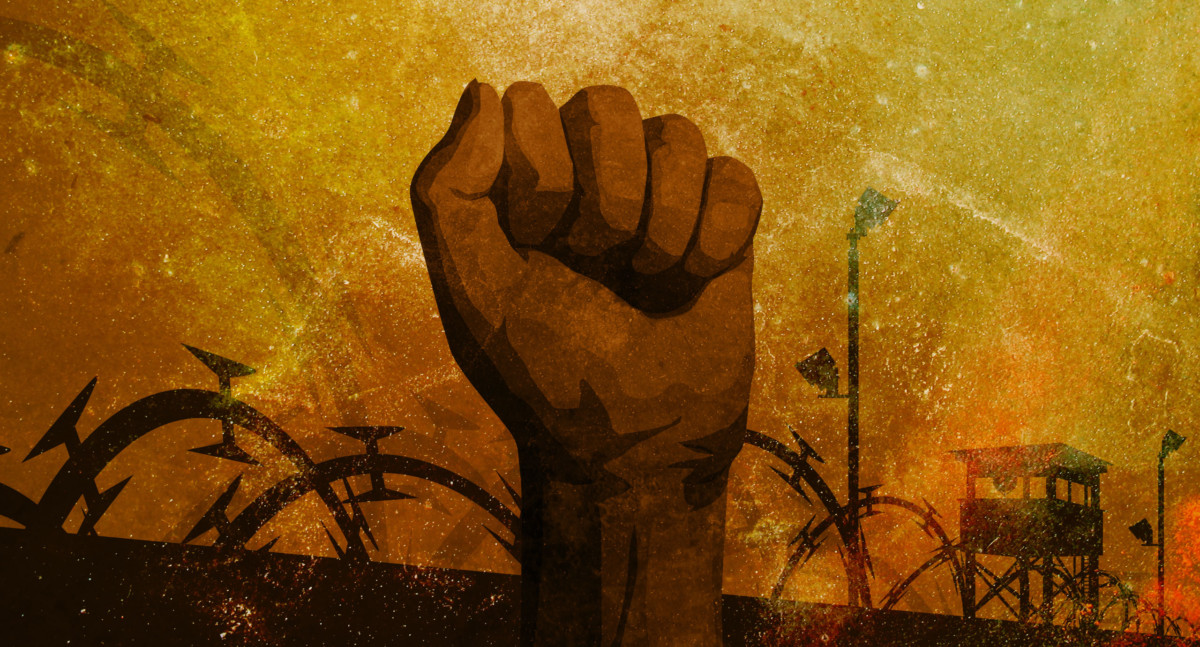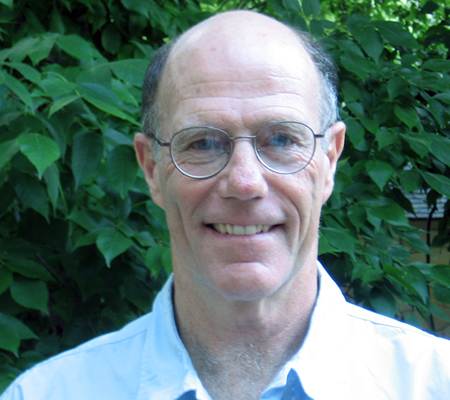By James Kilgore
Truthout
September 4th, 2018

“Fundamentally, it’s a human rights issue. Prisoners understand they are being treated as animals. Prisons in America are a warzone. Every day prisoners are harmed due to conditions of confinement. For some of us it’s as if we are already dead, so what do we have to lose?”
Pre-strike statement from Jailhouse Lawyers Speak
When the 2016 US prison strike kicked off, the media barely whispered. Despite efforts by the Free Alabama Movement, an organization centered around the men inside Holman prison, to spread the message through social media and compelling video footage taken inside prisons, mainstream journalists weren’t biting. While independent media outlets covered the strike, an action that ultimately involved thousands of people in two dozen states drew virtual silence from mainstream media.
With the current ongoing prison strike, we find a totally different scenario. The New York Times, the Guardian, Al Jazeera and The Washington Post all ran sympathetic op-eds at the strike’s outset. MSNBC’s Al Sharpton had a segment on the strike in which he interviewed a formerly incarcerated man (Darren Mack). USA Today ran an article on support demonstrations. Suddenly, prison militancy has become headline-worthy. As someone who spent six-and-a-half years behind bars, I have to wonder: What the hell is going on?
Testament to Hard Work
Several factors are at play here. First, as prison historian Dan Berger observes, “it is a testament to the hard work that has been happening.” Due to the efforts of millions of activists, mass incarceration has grown into an issue of political importance. We have national campaigns to end cash bail, local efforts to close jails, networks formed to defend the rights of LGBTQ folks who are locked up, and massive resistance to immigration detention and deportation. Organizations of formerly incarcerated people like All of Us or None, JustLeadershipUSA and the National Council of Formerly Incarcerated Women and Girls continue to proliferate.
Uncompromised, uncompromising news
Get reliable, independent news and commentary delivered to your inbox every day. Your Email
In parallel with the growth of this movement has been a swelling in the ranks of the Incarcerated Workers’ Organizing Committee. Closely linked to the revolutionary unionists of the Industrial Workers of the World (IWW), the Incarcerated Workers’ Organizing Committee has been the most vibrant source of support on the streets for both strikes. In its 2018 iteration, the Incarcerated Workers’ Organizing Committee also draws activists from a resurgent left, typified by the Democratic Socialists of America, now the largest socialist formation in the US in decades.
As the understanding of the oppressive nature of the prison system has grown, rebellion has begun to appear increasingly justified. Prison strike action is almost becoming normalized, an expected part of the social landscape. Since the first hunger strike at Pelican Bay Prison in California, this is at least the fifth major mass action by prisoners since 2011. Heather Thompson, author of the award-winning chronicle of the 1971 Attica prison uprising, Blood in the Water, explained to Truthout that in 2016, “there was a faith among many in the media that criminal justice reform was being handled, as it should be, by a bipartisan political effort.” In her view, many reporters at that time “perhaps felt that prisoners were making things worse by erupting.” Now, with hopes for bipartisan reform solutions fading away, people “are more willing to listen to the prisoners themselves,” the very people “whom everyone should have been listening to all along.” The New York Times, the Guardian, Al Jazeera and The Washington Post all ran sympathetic op-eds.
The killing of seven men in South Carolina’s Lee prison in April of this year provided further evidence that conditions in many prisons are reaching the boiling point and formal political processes are doing little to address the issue. Reports of the tragedy said the deaths occurred due to conflict among various factions in the prison population, but that guards waited seven hours before intervening.
An additional windfall adding legitimacy to strike action came with the widespread publicity given to the hundreds of incarcerated firefighters risking their lives battling the historic blazes in California for a few cents an hour, then facing a future where their criminal backgrounds would prevent them from being employed as firefighters after their release.
New Leadership
The high profile of this strike, however, is about more than heightened public awareness. There has also been a major shift in the aims and tactics of strike organizers. According to Brooke Terpstra of IWOC, not only has their organization grown in the past two years, but during that time, they have engaged in an intense study program in partnership with people inside prisons. Their goal was to both deepen their understanding of the prison-industrial complex and reflect on political strategy and ideology more broadly.
This shift has coincided with a re-shuffling of leadership. While the Free Alabama Movement and its charismatic leader, Kinetic Justice, played the leading role in 2016, this time around, the overall direction on the inside has shifted to Jailhouse Lawyers Speak. Unlike the Free Alabama Movement, Jailhouse Lawyers Speak is not identified with a single state or institution but is a network of legal activists in various facilities. Their approach is more cautious, more oriented toward legal change and more tightly structured. People “are more willing to listen to the prisoners themselves,” the very people “whom everyone should have been listening to all along.”
Whereas in 2016 local strikers were creating their own demands, this time, Jailhouse Lawyers Speak, perhaps drawing inspiration from the Ten-Point Program of the Black Panther Party, produced carefully phrased demands for the entire strike. They called these 10 demands a “human-rights oriented” platform. The demands focus on systemic issues like ending prison slavery, but also target specific legal reforms. These include the restoration of federal Pell Grants for people in prison wanting to undertake college study, an end to racialized over-sentencing, an increase in rehabilitation programs and several demands stressing access to legal due process, like rescinding the 1996 Prison Litigation Reform Act. This legislation heavily restricted the capacity of people in prison to file lawsuits. All told, these demands reflect an abolitionist approach that sees major change in the prison system as a long-term, deliberate process.
Furthermore, unlike the open-ended style strike in 2016, this strike set a strict time frame, with a very symbolic beginning (August 21, the day Black prison revolutionary George Jackson was killed by guards in San Quentin in 1971) and end (September 9, the 47th anniversary of the Attica prison massacre).
New Messaging
The emphasis on universal demands went hand-in-hand with the adoption of new approaches to messaging and methods of mobilization. The media messaging of 2016 centered on ending “prison slavery.” Moreover, the rhetoric of organizers implied an insurrectionary stance, emphasizing in their initial announcement that the strike would “coordinate and generalize these protests, to build them into a single tidal shift that the American prison system cannot ignore or withstand.”
Underlying that approach was the notion that most people in prison were in the employ of major corporations, laboring under semi-feudal conditions for a few pennies an hour. While a number of Southern prisons still resemble plantations (and some, like the notorious Angola Prison in Louisiana are actually sited on former plantations), in many states, jobs and paid labor are scarce. In some prisons, especially those at the higher security levels, only a small percentage of people actually work. Warehousing of bodies has replaced cheap labor regimes. Renowned Chicago radical lawyer Alan Mills’s observation about Illinois likely applies in many places: “Unlike many states where the problem is prisoners are forced to do jobs that are horrible with very little money, in Illinois prisoners are made to sit in their cells with nothing whatsoever to do.” Mills said that many feel that “even if a job is poorly paid it’s an improvement to confinement.” There has been a major shift in the aims and tactics of strike organizers.
Journalist and current strike media committee member Jared Ware told Truthout the recognition of the varying work regimes across prisons prompted a re-think about how to connect with people. Darren Mack, who spent two decades in prison and is now a leading member of decarceration advocacy group JustLeadershipUSA, echoed Ware’s observations. “Incarcerated people have learned lessons from the previous strike so they actively engaged supporters on the outside by giving them clear directions on ways to support bringing attention to their policy demands,” Mack told Truthout.
Amani Sawari, the official spokesperson for Jailhouse Lawyers Speak on the outside, told Truthout how this new orientation drew recognition from around the globe, with solidarity statements coming from people in prisons in Germany, Greece, Canada and from a group of Palestinian political prisoners. She also noted the changed tactics led to a different approach to mobilization. “Some prisoners don’t have the privilege to have a job,” she told Democracy Now!, adding that they could participate through sit-ins as well as boycotting purchases of prison commissary items or using the phones. Even those without funds, she stressed, could take part via hunger strikes. After the first week she reported to Truthout there were strike actions confirmed in 11 facilities, with solidarity actions in 21 different cities. Since prison officials try to suppress information about strike actions by cutting off communication, she said she expects to get reports of many more facilities having taken action once the strike is over.
In diversifying courses of action for their mobilization, the strikers drew inspiration from a set of essays called “Redistribute the Pain,” written by Brother Bennu aka Hannibal Ra-Sun of the Free Alabama Movement. His work called for people on the inside to use their economic power as consumers to hold back the money they spent in the system, pointing out that these funds were often used to purchase the equipment used to punish people inside — items like Tasers, pepper spray and stun guns. Creative uses of cellphones, Facebook and other social media have helped project the analysis and culture of those inside prisons.
Apart from acknowledging the variety of prison work regimes, the messaging of the 2018 strike by allies and accomplices also shows a less defensive stance. In 2016, organizers on the outside placed considerable attention on data and headcounts, trying to prove the success of their actions statistically. Such an approach had an inherent weakness in that prison authorities control the data and are not susceptible to fact-checking. While Brooke Terpstra provided no analytics, she said the strike was a success for three reasons: 1) the media were covering it; 2) people in prisons were coming together in coordinated action; 3) the people on the inside were controlling the information and narrative.
Solidarity: Making New Allies
The 2018 strike represents a qualitative and quantitative leap forward in both organizing and messaging. A critically important aspect of the 2018 actions has been connecting with resistance in the immigration detention centers. In fact, some of the most militant and effective actions have taken place in the Northwestern Immigration Detention Center, where hunger-strikers declared their actions were specifically in solidarity with efforts to “end prison slavery.”
In turn, organizers in Jailhouse Lawyers Speak have fully recognized the similarity in the plight of immigrants facing deportation. As an anonymous incarcerated Jailhouse Lawyers Speak spokesperson told Jared Ware in an interview: “As far as the connection and why we’re in solidarity, the biggest reason is because we understand those cages .. it’s all the same system.” How to deepen these connections is an important issue not only for prison-focused organizers, but also for social justice movements across the board.
As Dan Berger suggested in a phone conversation with Truthout, it is worth looking at the present prison uprisings through the lens of the 1970s when “a broad popular front against prisons,” was a reality. Another key aspect of solidarity in the strike has been the relationship among Jailhouse Lawyers Speak, the Free Alabama Movement, the Incarcerated Workers’ Organizing Committee and other organizations on the street. This raises the question of how people on the street support actions by those inside prison without upstaging them and silencing their voices, especially given the repression of communication by prison authorities. Creative uses of cellphones, Facebook and other social media have helped project the analysis and culture of those inside prisons. Resistance is a permanent feature in women’s prisons, but the weapons are not typically strikes or insurrections, but rather daily acts of rebelling by asserting one’s humanity.
The strike media committee has made enormous efforts to ensure the amplification of the voices of those on the inside. The interviews conducted by Jared Ware with Jailhouse Lawyers Speak have been exemplary in bringing the voice and views of people who are locked up front and center. Given the difficulties of communication across the razor wire, these have been remarkable. Nonetheless, the presence of a group largely made up of white activists directing the media traffic, rather than family and community members of those inside, represents a source of tension in the legitimacy of representation, a topic to be examined when the dust from this period settles.
Another source of concern has been the virtual absence of action in women’s prisons during the strike. While some of this may be due to more sophisticated responses by authorities, there are other issues. In an interview with the Chicago Reader, activist Monica Cosby, who spent 20 years in Illinois state prisons herself, stressed that resistance is a permanent feature in women’s prisons, but the weapons are not typically strikes or insurrections, but rather daily acts of rebelling by asserting one’s humanity. The organizers of the strike, as well as many activists on the issue of mass incarceration, have much to learn from Cosby’s observations.
While the high points of strikes and overt rebellion help draw attention to the problems of mass incarceration, there is a need to think about ways in which people in prison engage in what labor historians refer to as “informal resistance.” This resistance may range from defying rules to asserting one’s right to be human by engaging in activities like sharing meals (what we call “spreads” in prison) or getting involved in sports, music and graphic arts. While such acts don’t rock the prisons to their foundations, they are the kernels of positive spirit that keep those inside strong enough to be able to endure, carry out actions like the 2018 strike and withstand the horrific repression that unaccountable authorities visit on organizers and rebels.
Outcomes of the Action?
As with any mass action in a repressive setting like a prison, there will be backlash from prison authorities. From the 2016 strike, leaders like Kinetic Justice of the Free Alabama Movement and Malik Washington, founder of the End Prison Slavery Texas Movement. have suffered long periods in solitary confinement. Already, those identified as “instigators” in Texas, Ohio and South Carolina reportedly have been sent to isolation. No doubt there will be more efforts by authorities to punish, vilify and isolate those they identify as leaders.
Optimistic outcomes of the 2018 actions would be the restoration of Pell Grants, a measure already partially in motion, and a repeal of the Prison Litigation Reform Act. As Darren Mack said, “It’s urgent that elected officials respond to the 10 policy demands in order to tackle the systemic problems of mass incarceration and racist criminal justice policies that have led to tragic events like the Attica massacre and devastated millions of lives.”
But regardless of actions by elected officials, as Heather Thompson observed, “No matter how many folks were actually able to sit in or stop working or not eat, on the outside, vital attention was drawn to the issue of how horrific prison conditions are and also the longer history of prisoners standing up to be heard at places like San Quentin and Attica.”


